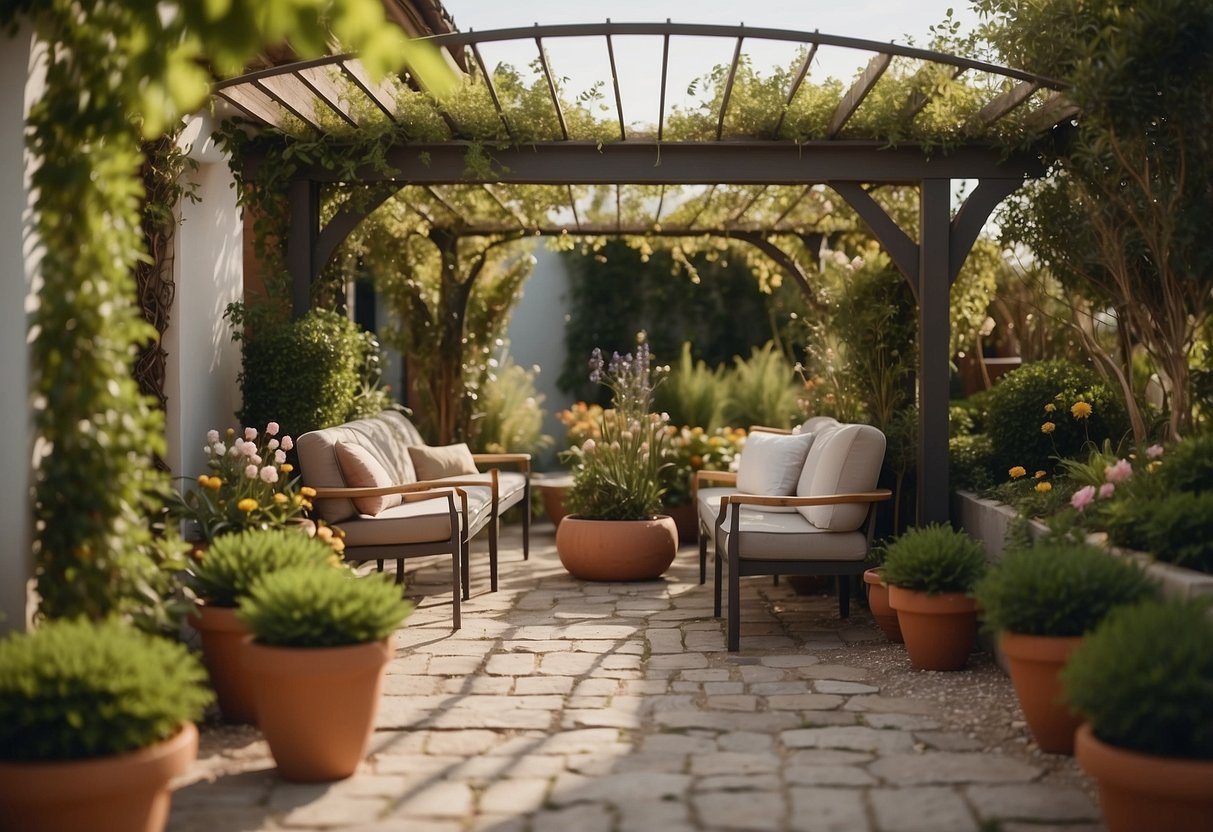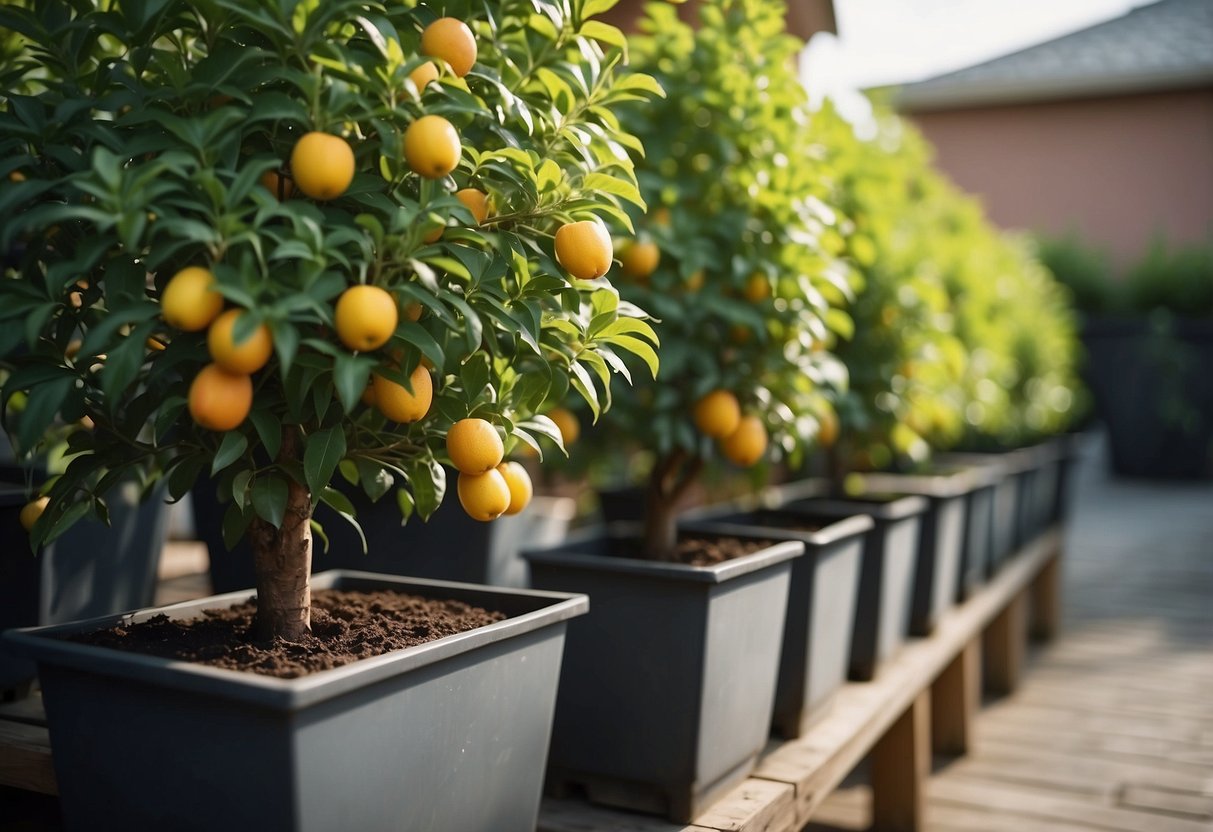Small Narrow Garden Ideas: Transform Your Tiny Outdoor Space
Are you looking to transform your small, narrow garden into a beautiful and functional space? Whether you’re a seasoned gardener or a novice, there are plenty of creative and practical ways to maximize your limited outdoor area. You’ll discover tips and ideas that can turn even the tiniest plot into a lush and inviting retreat.

By making the most of every inch, you can create a garden that’s both aesthetically pleasing and practical. From clever layouts to the use of vertical space, there are countless approaches to enjoy your narrow garden to the fullest.
1) Vertical Planters

Using vertical planters is a great way to maximize space in a small, narrow garden. You can mount planters on a wall or fence to create a vertical garden. They are perfect for growing flowers, herbs, or even small vegetables.
Consider using old pallets, which can be easily converted into vertical planters. This approach gives your garden a rustic look and is budget-friendly. For a more polished look, you can buy vertical planter systems.
Vertical planters also make it easier to tend to your plants. Watering and harvesting are a breeze, even in tight spaces. Check out these vertical garden ideas for more inspiration!
2) Tiered Herb Garden

A tiered herb garden is perfect for small or narrow spaces. You can use stacked pots, shelves, or even a tiered stand to maximize your growing area. Each level can hold different herbs, giving you a variety of fresh flavors.
Choose sturdy materials for your tiers, like wood or metal. Position your garden in a sunny spot to help the herbs thrive. Water regularly and enjoy the convenience of having fresh herbs right at your fingertips. For more ideas, check out these space-saving herb garden ideas.
3) Hanging Baskets

Hanging baskets can add life and color to a narrow garden. You can use trailing plants like fuchsia or fan flower. They don’t just save space, they also provide a delightful view at eye level.
For shady spots, consider using greenery like ferns or hostas. They thrive without much sun. If you prefer blooms, choose flowers like snapdragons or verbena for sunny areas.
You can find more ideas and design tips from Gardeningetc or check out Epic Gardening for plant selections.
4) Foldable Bistro Set

Looking to maximize your small garden space? A foldable bistro set could be just what you need. These sets are compact and easy to store, perfect for narrow areas.
Choose a lightweight design that you can easily move around. Many bistro sets are now fully foldable and easy to store.
Enjoy a cozy breakfast or a cup of coffee while making the most of your limited space!
5) Raised Beds

Raised beds are a great way to make the most of a small, narrow garden. They provide better soil drainage and can keep your garden organized.
You can use materials like wood, stone, or metal for your raised beds. They can be as simple or as decorative as you want.
Raised beds also help keep weeds at bay. They make it easier to reach your plants, which can be a big plus in a tight space. To learn more, check out these raised garden bed design ideas.
6) Trellis for Climbing Plants

Adding a trellis can transform your small garden. It offers vertical space for plants to grow, perfect for creating lush, green walls.
Choose climbing plants that fit your climate like jasmine, honeysuckle, or roses. They will thrive and make your garden look beautiful.
Consider unique trellis ideas from Martha Stewart or Country Living. These can add charm and character to your outdoor space.
7) Modular Deck Tiles

You can easily transform a narrow garden with modular deck tiles. These tiles are simple to install and come in various materials like wood, composite, or even stone.
Modular deck tiles let you create a stylish surface fast. They’re perfect for uneven ground and can be rearranged anytime to refresh your space. Check this idea for inspiration.
8) Compact Water Feature

Adding a small water feature to your garden can make it feel more lively and peaceful. A simple rocky fountain or a narrow pool can bring a refreshing touch to your outdoor space.
Using different materials like stone or metal can create a unique look. This adds character and charm to your garden.
Water features are also great focal points. They draw attention and can make your small garden feel more dynamic and inviting.
9) Container Fruit Trees

Container fruit trees are perfect for small, narrow gardens. They take up little space and can be easily moved around. You can grow a variety of fruits like apples, pears, and plums.
Dwarf fruit trees are especially good for containers. These trees stay small but still produce a lot of fruit. They can fit on patios, balconies, and even indoors near sunny windows.
Try growing dwarf lemon trees for a fresh citrus scent and tasty lemons. Pear and plum trees can also thrive in pots with proper care. Happy gardening!
10) Mirrored Wall Panels

Mirrored wall panels can make your narrow garden feel bigger. By reflecting light and greenery, they create an illusion of more space.
Place them strategically on fences or walls. This not only enhances the visual appeal but also brings more light into shaded areas.
For a touch of elegance, choose frames that match your garden’s theme. Explore more about garden mirror ideas here.
Maximizing Space in a Small Narrow Garden

Making the most of a small, narrow garden can be achieved by employing vertical gardening techniques and choosing the right planters for compact spaces. With thoughtful planning, even the narrowest gardens can become lush, functional areas.
Vertical Gardening Techniques
Vertical gardening allows you to use the vertical space in your garden, freeing up ground space. Trellises and wall planters are excellent for this. Secure a trellis against a wall or fence and grow climbing plants like beans, peas, or ivy. This not only adds greenery but also creates a visual barrier for privacy.
Hanging planters are another way to make use of vertical space. Attach them to walls, pergolas, or hooks. Plants such as strawberries, herbs, and trailing flowers like petunias grow well in hanging planters. Living walls or green walls are also popular. They involve planting pockets or vertical containers attached to a wall, creating a stunning, green backdrop.
Shelves and ladders can hold pots, making it easy to rotate plants based on their sunlight needs. Vertical gardening transforms a limited area into a bustling green space, maximizing your garden’s potential.
Utilizing Small-Space Planters
Choosing the right planters is crucial for a narrow garden. Window boxes can be mounted under windows or along railing edges. They are perfect for herbs, flowers, or small vegetables. Narrow containers can be placed against walls or along pathways without taking up much space.
Tiered planters provide multiple levels for planting. These can be easily tucked into corners or placed along fences, offering a variety of planting spots. Stackable planters also make good use of vertical space, allowing you to grow more plants in a small footprint.
Portable raised beds are beneficial as they can be moved to find the best light conditions. These beds are suitable for growing everything from leafy greens to root vegetables. With thoughtful planter selection, every inch of your garden can be utilized efficiently.
Design Tips for Narrow Gardens

When designing a narrow garden, it’s important to create visual flow to make the space feel larger and incorporate focal points to draw attention and add interest.
Creating Visual Flow
Creating visual flow in a narrow garden helps the space feel more inviting. One way to achieve this is by using curves and organic shapes instead of straight lines. Curved pathways or flower beds can guide the eye and make the garden seem more expansive.
Another tip is using repetition. Planting the same types of plants or flowers at intervals creates harmony and leads the eye through the garden. To add depth, layer your plants with taller ones in the back and shorter ones in the front. This creates a tiered effect, giving the illusion of a more spacious garden.
You can also mirror elements on either side of a path, like lining a narrow deck with pots. Symmetry can make the garden appear more balanced and less cramped.
Incorporating Focal Points
Focal points draw attention and create interest in a narrow garden. You could use an ornamental feature such as a central fire pit which can double as a useful table when not in use. This functional element adds both beauty and practicality.
Think about adding a living wall as a screen to provide privacy and interest. Pergola-covered terraces can also serve as focal points while offering shade and a place to relax.
Including a water feature like a small pond can be another striking focal point. When moderately lined with edge plants and filled with floating aquatics, it elevates the garden’s appeal. Remember to scale the pond’s width to fit the narrow space effectively.
Maintenance Tips for Small Gardens

To keep your small garden vibrant and hassle-free, you’ll need smart irrigation solutions and the right choice of plants. Efficient irrigation and low-maintenance plants can make a big difference in how easy your garden is to care for.
Efficient Irrigation Solutions
Watering a small garden efficiently can save time and reduce water waste. Drip irrigation systems work well for narrow spaces because they deliver water directly to the plant roots. Soaker hoses are another great option; they can be snaked through your garden beds to ensure even watering.
Use timers to automate your watering schedule. Early mornings or late evenings are the best times to water to minimize evaporation. If you have potted plants, make sure they have saucers to catch and retain water.
Using mulch around plants helps retain moisture and reduces the frequency of watering. Organic mulches like wood chips or straw can also improve soil quality over time.
Choosing Low-Maintenance Plants
Opt for plants that require minimal care and can thrive with little intervention. Perennials are a good choice because they come back year after year without needing to be replanted. Look for plants that are drought-resistant like lavender or succulents.
Native plants are adapted to your local climate and soil, making them easier to care for. Evergreens provide consistent structure and color with minimal upkeep. For added variety, include gravel gardens; these require less watering and offer a modern look.
Group plants with similar water and light needs together to make it easier to manage their care. This way, you’re not constantly adjusting your watering or sunlight exposure for different plant types.







